Nothing is more unpleasant but incredibly worrying than driving a car, and your car vibrates for no apparent reason. Therefore, it is better to find the origin of this symptom.
You would want to fix the car vibration as quickly as possible to prevent any further potential damage or, even worse, a car accident. Now, let’s investigate the most common causes and solutions when your car shakes when accelerating.
What to do first when you feel that your car vibrates?

First of all, you will have to try your best at isolating the car vibrations’ probable cause while trying to detect if it’s rather coming from the car’s engine, the powertrain, the suspension, the direction system, or the connected wheels.
Most car vibration problems at high speeds or at a constant speed are related to the wheels in some way and car shakes when accelerating are usually related to engine mounts and motor mounts.
To help you with that, first, try to notice if the car shakes are related to hard acceleration or braking. Is it happening when it’s cold outside or not? Is it a frequent occurrence when changing gears? Have you hit a pothole recently? Are the tires installed in your car excessively worn out?
All these hints will help you find where the problem is originating from. It will allow you to take your investigation a little further when your car shakes.
If you notice that your car is shaking when a gear is engaged, or if it disappears when the clutch is depressed, and when you put the transmission in neutral, you’ll need to focus primarily on the transmission components next. Car vibrating problems related to the engine mounts will usually vibrate according to the vehicle’s rpm.
Make sure you don’t mix up rpm and speed though. If you can feel excess vibration linearly and according to the speed of the vehicle instead of the rpm, the problem has probably more to do with the wheels or anything connected to it.
7 Common Causes Of Car Shakes When Accelerating
I’d rather warn you. Because most components inside the powertrain and drivetrain systems move at really high speeds. Any incorrectly balanced part can cause a vibration such as failed brake components, loose lug nuts, damaged cv joints, deformed rear axles, a bent axle, or even an unbalanced rear-wheel drive.
Moreover, the cause of car shaking could be bad combustion because of a dirty fuel filter or faulty spark plugs. Or even worn parts such as loose lug nuts, wheel nuts, and erratic cv joint inside the transmission.
A slight misalignment in the rear wheels can also cause car shakes and even broken motor mounts. Some other causes of car shaking can also be related to the brake pads and tire pressure.

This list is pretty exhaustive and following it point by point and eliminating them one by one to find the cause of your car shaking may be really time-consuming. Try to at least locate the problem first by performing a test drive to pinpoint the problematic system.
For now, let’s focus on the major causes of car shakes and we’ll talk more about troubleshooting a little later in this article.
1. Incorrect Wheel Balancing
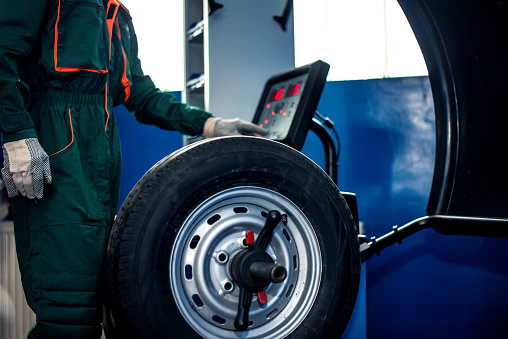
The first thing any mechanic will think about when having to deal with a vibration problem is unbalanced tires. And a quick check-up on the wheel balancer will usually give them a good idea if this one will be a quick fix or if it will need a more advanced diagnosis.
Unbalanced tires can happen for numerous reasons and these are the following:
Loose Wheel Alignment
Wheel weights sometimes fall off when you hit potholes and bumps plus they can also rust and fall out. This happens sometimes unknowingly when you are driving straight for days without checking.
If your car is equipped with mag wheels that don’t have a rim lip, the small wheel weights are usually stuck to the inside of the wheel using adhesive wheel weights. Water and snow can often cause the weights to fall off when the tire rotates at higher speeds.
Furthermore, an unbalanced tire can happen if your stick-on wheel weights don’t always last as long as standard ones but that’s the price you pay for having badass chrome wheels on your ride.
Deformed Wheel
If you hit a big enough pothole, one of the wheels could bend and cause unbalanced tires. This happens even more with bigger aftermarket mag wheels. RTX models from a couple of years ago are a good example as they were widely known by car enthusiasts to bend pretty easily.
Just as for the wheels, potholes can crack the inside metal contact, eventually, of your tire layers. It makes them either wavy or creates a bump on the sidewall of the tire.
Both of these situations will cause an improper balance of the tire and will definitely create car shakes when accelerating and driving at a low speed and even at higher speeds.
Always remember that the cheaper your wheels are, the easier they will bend but a big enough hole can make any wheel bend no matter how good they are. And this makes car shaking possible
Uncleaned Wheels
This one is pretty frequent and people don’t always think about it before bringing their car to the repair shop.
If you were just stuck in a snowbank or drove in a mud pit and your car vibrates when accelerating and starts shaking at high speed, think about stopping the car on the side of the road and inspecting the inside of your wheels for dirt.
If losing a 0.75 oz. wheel weight can make your car shake, imagine what a 0.5 lbs. of mud stuck inside your wheel can do!
2. Incorrect alignment

When a mechanic performs an alignment job on your vehicle, he is basically making sure that all 4 wheels are parallel to each other. I say ‘basically’ because a correct alignment is a lot more complicated than that.
Most vehicles require a slight toe-in, i.e. front wheels pointing slightly inwards. This is to help the vehicle drive in a straight line even when you are not holding the steering wheel.
The camber and caster also need to be correctly set because only one or 2 degrees out can make a big difference in your vehicle’s handling.
All this is really hard to put in layman’s terms and you may be a little lost if you aren’t a full-fledged mechanic. Simply remember that an improper wheel alignment can cause an annoying car shaking at high speed.
There’s is no way to verify it by yourself. All those backyard mechanic tricks like using a rope or a level or anything else than a laser alignment machine is simply worthless.
The only incorrect alignment sign you can visually notice is unevenly worn tires. For example, one or more of your tires is worn out only on the inside or the outside of the tread. It usually indicates an incorrect toe or camber setting.
The vehicle might also drag to one side or the other when you let the steering loose. The only drawback to this is that until the time you are able to detect uneven wear on your tire, you may well rush to the shop to get an alignment job. However, it will be too late and you will still need to replace the defective tires.
And tires are expensive.
To avoid that, get your car aligned at the same time as you get your winter tires on or at least once a year. Paying for an alignment every year or so is still a lot cheaper than having to buy a full set of new tires.
3. Worn or loose suspension component

Ball Joints
Ball joints, as they wear out, will create a space between the actual ball and its seating. This will ultimately make the wheel shake while driving. The vibration will get worse and worse according to the vehicle’s speed.
A knocking sounds when driving over potholes is a good indication that one of your ball joints needs to be replaced to reduce car shakes when accelerating.
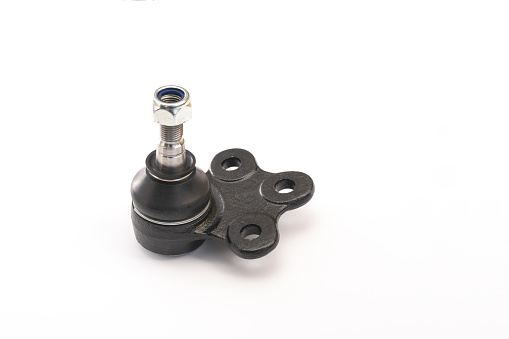
Broken Motor Mounts and Control arms

Just as with ball joints, time will leave its mark on the motor mount and control arms too. Bushings used to mount the arms to the vehicle are made out of polyurethane and will not last forever. A motor mount tends to dry out and crack and will become loose after a while.
If they are not replaced quickly, the car vibrating can become a real problem. It could also cause more damage to other suspension components. Do not take this one lightly and get it fixed as soon as you can.
Wheel bearings
I know, wheel bearings aren’t really part of the suspension system but I decided to include them here since they are placed inside the knuckle. Consequently, they will often be heard and felt through the shock absorbers and coil springs.
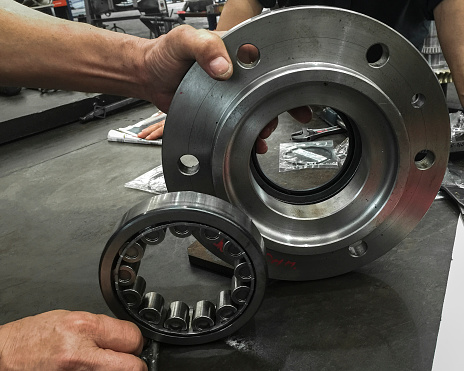
Wheel bearings don’t typically cause vibrations though. At least not until they are totally destroyed to the point where the ball bearings start to come out of it creating a loose connection between the outer and inner joint. I strongly recommend that you replace a noisy or loose bearing way before that.
The small ball bearings are pretty much the only thing holding your wheel to the spindle. So, you really don’t want to lose one while driving at high speed.
4. Transmission problems
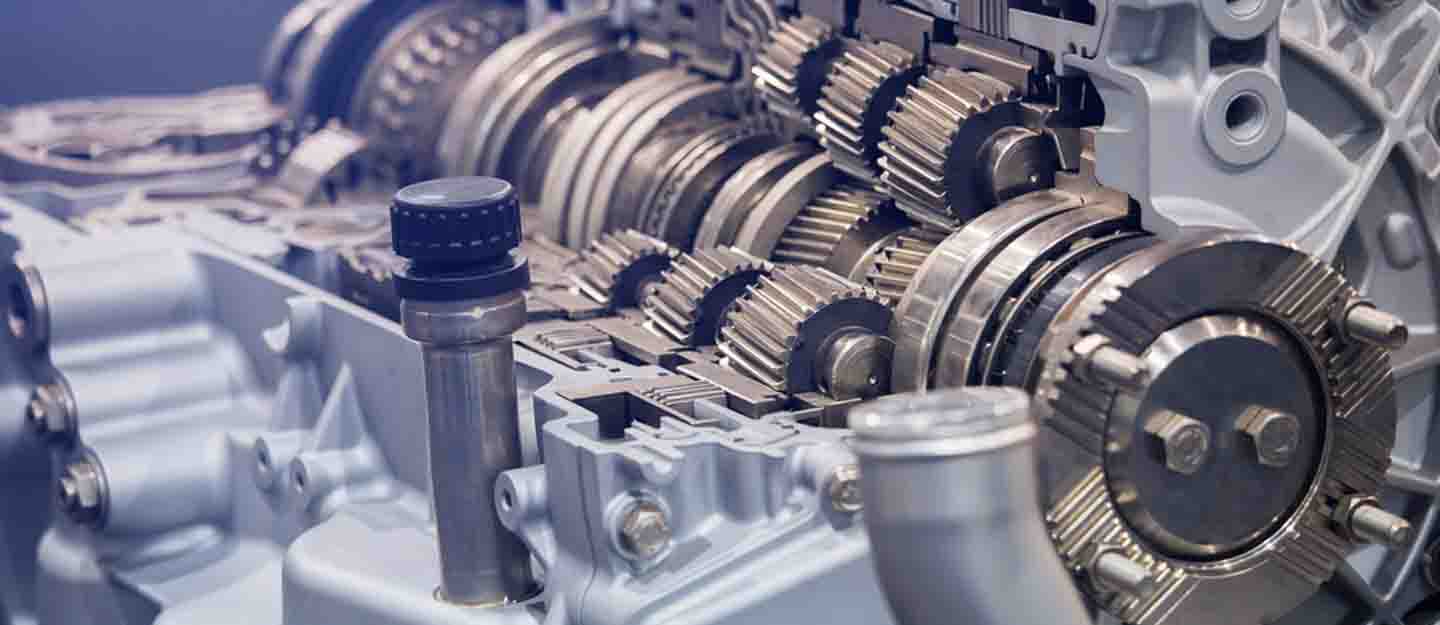
Gearbox
It’s safe to say that almost any faulty component inside the gearbox can make it vibrate, jerk or stutter, and transfer the vibration to the rest of the car.
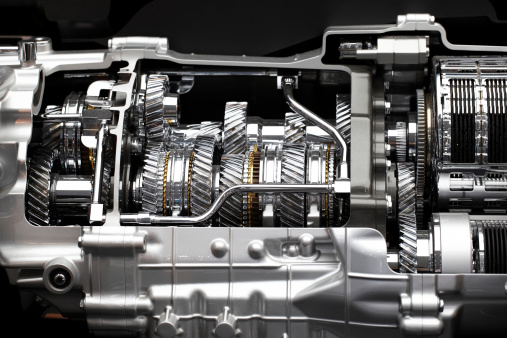
Improperly balanced input and output shafts, worn-out drums, incorrect oil levels can all cause added restrictions, vibrations, and incorrect gear shifts.
Typically, the best way to find out if the vibration is coming from the transmission or not is to put the car in neutral or shift gear as soon as it starts to vibrate. The vibration should stop, change, or at least slow down.
If the vibration stays the same, the problem is probably coming from somewhere else.
Flywheel/clutch
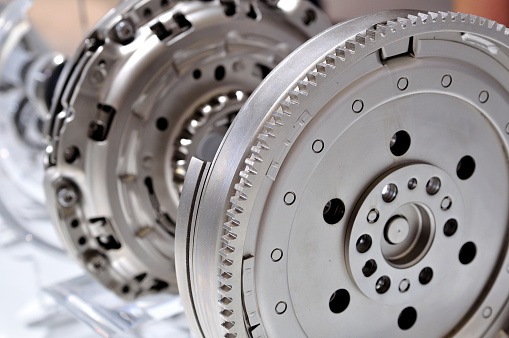
On a manual transmission, a spotted or uneven flywheel can provoke significant vibrations but can also damage the clutch in a few months. The vibrations will be felt when the clutch is not in use and when changing gears.
Bent Driveshaft
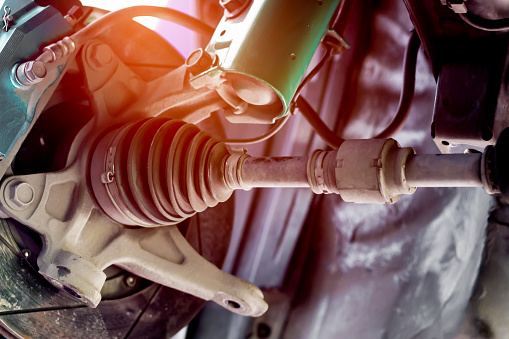
Slightly bent or improperly balanced driveshafts can also cause vibrations at a low speed. On FWD cars, it’s pretty rare but it happens a lot on RWD and 4WD vehicles.
Stuck cv joints or seized universal joints can do the same thing. The vehicle will start to shake at about 50km/h and the condition will only get worse the faster you go.
Most driveshafts are balanced from the factory and balancing weights are welded to it to achieve a perfect balance of the exact same weight. Moreover, it’s the same with wheel weights. They can fall off when they begin to rust.
The older the vehicle is, the more likely it is to happen. Also, any foreign object hitting the driveshaft with enough strength can bend it and it will need to be replaced.
5. Stuck Brake Caliper
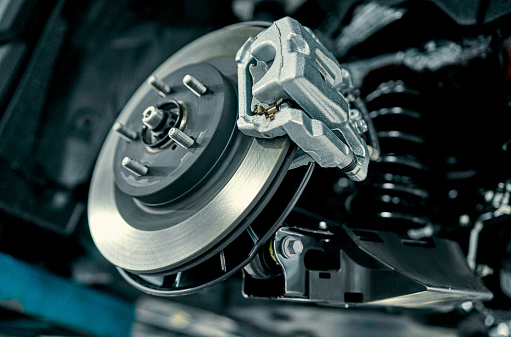
When a brake caliper on a wheel fails, causing it to stick, you may experience significant shakes when accelerating. In this situation, the steering wheel will wobble when you approach 40-50 mph.
Furthermore, as you accelerate, the car shakes will get more intense. When you come to a halt, you’ll notice a burning stench emanating from the automobile.
If you suspect a stopped brake caliper, inspect the whole braking system, giving special attention to the caliper piston, slides, lug nuts, and caliper bolts. Proper lubrication and cleaning of the parts are sometimes necessary, but defective brake systems must be replaced.
6. Engine Power Problem
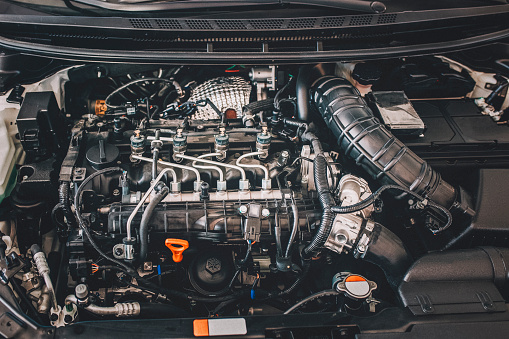
Injection and fuel delivery
On pretty much any internal combustion engine, 2 strokes, 4 strokes, gas or diesel, the air/fuel ratio must be perfectly maintained in order to avoid losing power. If the injectors are not working properly or a gas line is leaking, for example, it will create misfires that will make the engine stutter and vibrate.

An injector problem will cause the engine to shake whether you are parked or not. Faulty injectors rarely are an intermittent condition because they either work or they don’t.
Fuel pumps, on the other hand, tend to be intermittent at first, until they ultimately fail completely. If your car stalls or starts stuttering, try carefully hitting under the fuel tank with a hard rubber material such as a hammer.
Lastly, to reduce engine vibration, you probably need to replace the fuel pump.
Ignition System: Spark Plugs
Defective spark plugs may prevent one or more of the cylinders from operating correctly. If your spark plugs are worn or dirty, they won’t be able to create a nice and powerful spark. This means they will not ignite the air/fuel mix contained in the cylinders.
Without that much-needed explosion, the crankshaft or the propeller shaft will not turn at the proper speed for the whole revolution. Also, the engine will run erratically, transmitting vibrations to the whole car.
Same thing for any of the other components of the ignition system. Distributors, rotors and ignition wires may well be a thing of the past now. However, the coil-on-plug system still needs to work correctly for the spark plugs to light up the fuel.
A bad or missing sensor reading can also cause the PCM to not send the firing signal to the coils too. Most of these problems should make the check engine light to light up. So, make sure to always check your DTCs first.
Any of the p0300 to p0308 diagnostic trouble codes will let you know if there’s something wrong with your ignition system and misfires are happening.
Internal components
There may also be other compression or firing problems. It could be carbon deposits in the combustion chamber or an incorrect timing sequence of the intake and exhaust valves. A leaking engine head gasket could also cause misfires and make your engine vibrate and that will cause you a new pan gasket seal to make it run.
These problems are difficult to identify and also sometimes difficult to fix. Compression tests will be needed. Also, an internal check-up using a small camera or the removal of the engine head will be required to perform a thorough inspection.
If you don’t know what you are doing, leave this one to professionals. This one is not for beginners.
7. Air intake problems
A clogged transmission filter will obviously prevent enough air to reach the engine but a leaking air intake can also bring false sensor readings. In fact, any leak in between the air filter and the engine head will bring more air to the engine than what the mass airflow sensor is measuring. It will cause engine misfires.
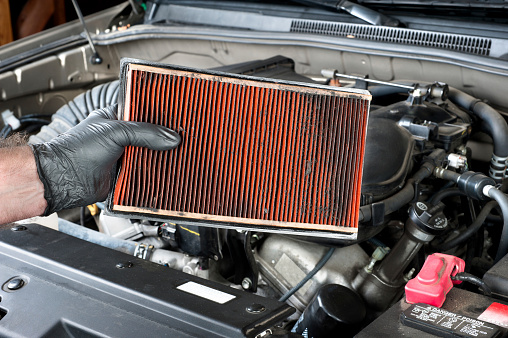
A malfunctioning mass airflow sensor can also create the same symptoms without any air leaks so be warned. Always use an OBD-II scanner to verify that the data sent by the MAF sensor is outside the normal threshold before replacing it. If the data seems normal, the problem is probably caused by an air leak instead of a malfunctioning sensor.
Recorded DTCs can also help you find out if your mass airflow sensor is in good working condition. A code will be set if the data goes out of a normal operating threshold. Worth mentioning, MAF codes can take a while to be set.
So, if your car just stutters and dies as soon as it’s started, it may not have been running long enough for a code to be set. Further bench-testing of the MAF sensor will then be required.
A loose or cracked vacuum hose and even a disconnected vacuum hose will also make the engine stutter and vibrate. If air can enter the intake system anywhere after the MAF sensor, it will add to the volume of air measured by the sensor.
Then it will create an incorrect air/fuel ratio, once again leading to more misfires. Look out for anti-pollution systems and purge valve codes. A p0402, for example, is a sign of a leaking vacuum hose.

An old trick to identify air leaks leading into the intake system is to keep the engine idling and spray the air intake pipes and hoses with brake fluid cleaner. Please be warned that brake fluid cleaners are extremely flammable, the RPM of the engine should rise quickly if there is a leak somewhere. As soon as the engine’s sound starts to change, stop spraying, wait about 30 seconds. Repeat until you have correctly located the leak.
Key Maintenance Whenever Your Car Vibrates
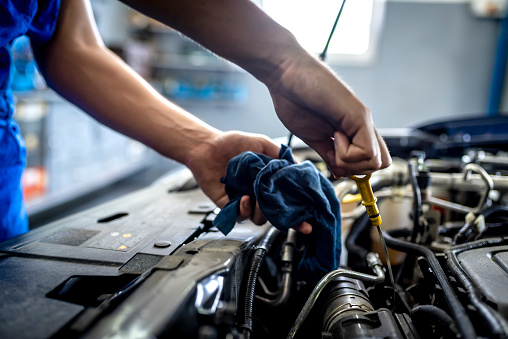
To reduce the risk of experiencing unwanted and excess vibration on your vehicle, it’s recommended to have your car regularly and thoroughly inspected by a professional. However, ideally, the owner should take as much care of it as possible to avoid even a minor accident.
Always keep your tires inflated at the appropriate tire pressure to ensure your tires last as long as possible without deformation and uneven wear. If you don’t have the idea then you can certainly go to a tire shop for them to check the overall air pressure status of your tires or even they can suggest new tires in the long run.
Buying and replacing suspension, brake pads in the brake system and direction parts with proper factory specs and not only the cheapest ones available will definitely help too. No car will ever last forever and components will always end up needing to be replaced at some point.
But, with a little love from its owner and extra care provided by a trustworthy mechanic, it could last a lot longer while keeping the total cost of repairs to a minimum.


